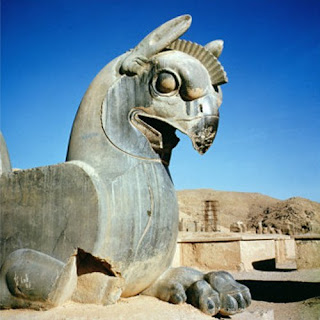Painting: colour theories
In which we learn about colour !
Primary Colours:
The primary colours are Red, Yellow and Blue. These are considered to be the most pure in their intensity, or are fully saturated, in terms of their pigments. Primaries can be mixed to give secondary colours, for instance, Red + Yellow = Orange, Blue + Yellow = Green, Blue + Red = Purple.
Secondary Colours:
These are created by mixing two primary colours in equal amounts. The mixing of a secondary colour with a primary colour gives Tertiary colours. Artists often choose to work with tertiary colours eg A palette of Red and Green mixes can be seen in this painting by Rousseau (below) :
'The Hungry Lion throws itself on the Antelope' by Henri Rousseau 1905
Looking carefully at paintings in classical art, one can see that artists tend to use a restricted colour palette, and these might often be based on pairs of secondary colour combinations such as Red & Green, Yellow and Violet, Blue & Orange.
Below is a painting by Francis Bacon, based on Yellow and Violet
Complementary Colours:
Complementary colours are another way of looking and thinking about colour; these are colours that sit opposite each other on the colour wheel. So Yellow is opposite violet, Blue is opposite orange, and Red is opposite Green.
How Complementary colours are used by eg the Advertising world is interesting. As each colour carries equal weight, as in the example below, the effect is strong:
(This is a cutout based on a Matisse image)
It is a fact that Advertisers have used in their campaigns; Ryanair springs to mind!! These are strong colours that are not easily dismissed. Tesco uses similarly strong colours in their logo.
Far easier on the eye are Harmonious colours; these are colours that sit next to each other on the colour wheel. Designers (interior, fashion, car etc) use this fact to inform their colour choices, influencing mood and atmosphere. So, one might put 2 blues together, or Yellow, Green and blue....
Colour Intensity and Temperature
We also looked at colour intensity, and how this can vary, according to how a colour is seen in relation to another colour. For instance, yellow when paired with white, appears to stand out very intensely, in contrast to when it is paired with yellow umber, where it's impact is reduced.
Likewise in the example above, the the yellow paired with the blue (top) is very punchy,
compared to the one below.
Also, a warm colour placed beside an even warmer one, will appear cooler, which makes it appear to recede. So the yellow placed next to the blue above, seems to come forward, much more than the yellow below it, which is placed beside a comparatively warm colour. All very interesting stuff!!
Colour Distance
The wave length of colour varies, and this too has an effect on how one sees it. Warm colours have longer wave lengths than cool colours; Red has the longest wave lengths of all, and appears to move forward in a scenario, whereas blue has short wave lengths and always appears to recede. Placing hot and cool colours
side by side emphasises this feature.
These properties can be useful to painters; one who is a master in the use of receding colours is
Casper David Friedrich, a so called German Romantic painter.
'Moonrise by the Sea' by C D Friedrich.
Pointilism
Pointilism is a technique that developed out of the Impressionist style (tiny dots of colour). Georges Seurat and Paul Signac, great admirers of Impressionism, started to use primary dots of colour, with plenty of white between, so that secondary colours start to appear.
Our brains start to see these colours as complex pictures rather than individual dots of pure colour. Here is Seurat's most famous painting: Un Dimanch a la Grande Jette:
Quite a lot of white comes through from the canvas, altering the way we see the colours.













Comments
Post a Comment